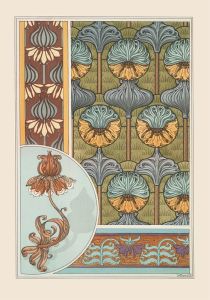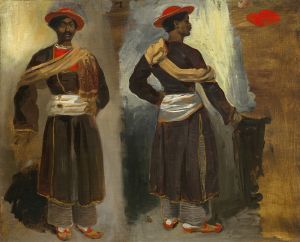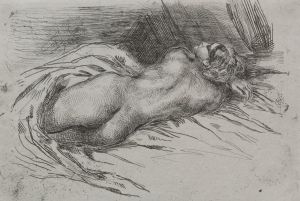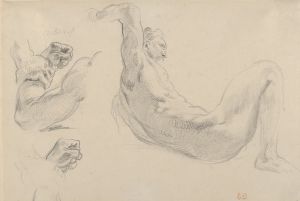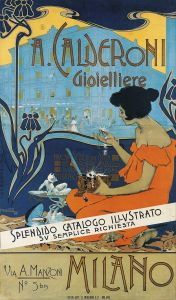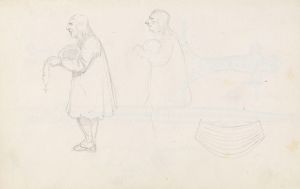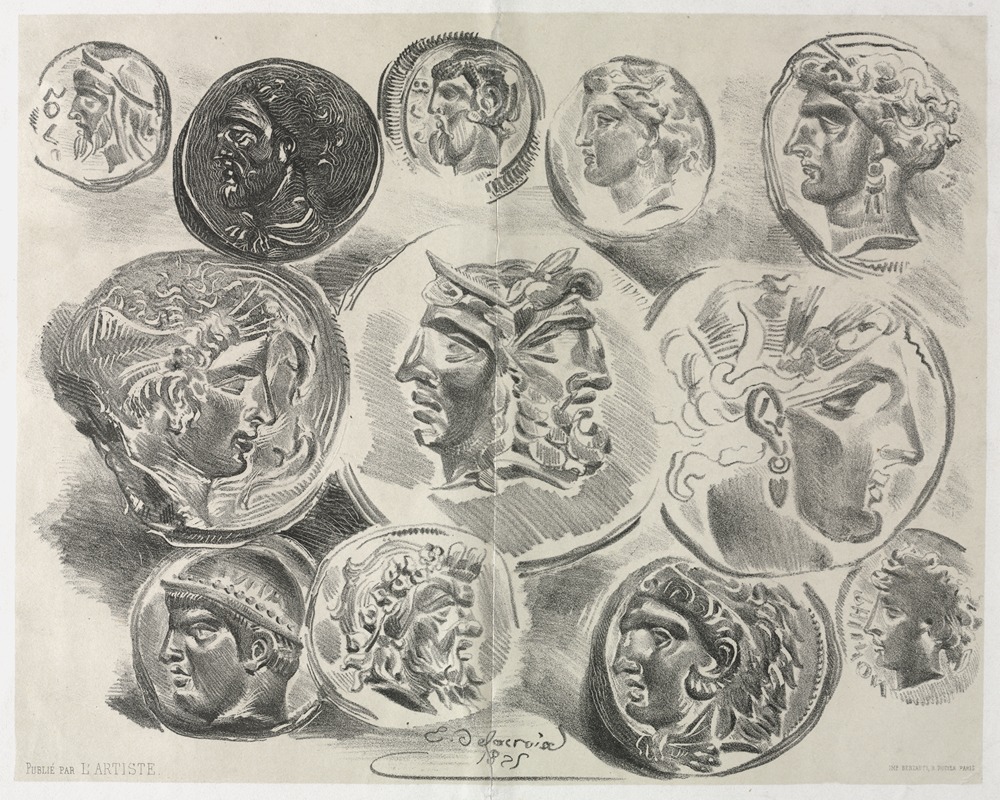
Feuille de douze médailles antiques
A hand-painted replica of Eugène Delacroix’s masterpiece Feuille de douze médailles antiques, meticulously crafted by professional artists to capture the true essence of the original. Each piece is created with museum-quality canvas and rare mineral pigments, carefully painted by experienced artists with delicate brushstrokes and rich, layered colors to perfectly recreate the texture of the original artwork. Unlike machine-printed reproductions, this hand-painted version brings the painting to life, infused with the artist’s emotions and skill in every stroke. Whether for personal collection or home decoration, it instantly elevates the artistic atmosphere of any space.
"Feuille de douze médailles antiques" (Sheet of Twelve Antique Medals) is a work by the renowned French Romantic artist Eugène Delacroix. Delacroix, born on April 26, 1798, and passing away on August 13, 1863, is widely regarded as one of the leading figures of the Romantic movement in art. His works are characterized by their expressive brushstrokes, rich color palette, and often dramatic subject matter.
The "Feuille de douze médailles antiques" is a lesser-known piece within Delacroix's oeuvre. This work is a study that reflects Delacroix's interest in classical antiquity, a common theme among artists of his time who sought inspiration from ancient Greek and Roman art and culture. The piece consists of twelve meticulously rendered medals, each depicting a different figure or scene from antiquity. These medals are arranged in a grid-like format on a single sheet, showcasing Delacroix's skill in detailed and precise drawing.
Delacroix's fascination with classical themes is evident in many of his works, and this particular piece highlights his ability to capture the essence of ancient art forms. The medals are drawn with a high degree of accuracy, reflecting Delacroix's dedication to studying and replicating the classical style. This work can be seen as part of his broader exploration of historical and mythological subjects, which he often infused with his own Romantic sensibilities.
The exact date of creation for "Feuille de douze médailles antiques" is not well-documented, but it is believed to have been produced during the early to mid-19th century, a period when Delacroix was actively engaging with themes from antiquity. This work is an example of Delacroix's versatility as an artist, demonstrating his ability to work not only on large-scale, dramatic canvases but also on smaller, more detailed studies.
Delacroix's interest in classical antiquity was not merely academic; it was also deeply personal. He admired the ideals of beauty, heroism, and nobility that ancient art embodied, and he sought to incorporate these elements into his own work. The "Feuille de douze médailles antiques" serves as a testament to his reverence for the past and his desire to connect with the artistic traditions that preceded him.
While "Feuille de douze médailles antiques" may not be as widely recognized as some of Delacroix's other masterpieces, such as "Liberty Leading the People" or "The Death of Sardanapalus," it remains an important piece within his body of work. It provides insight into his artistic process and his engagement with classical themes, offering a glimpse into the mind of one of the 19th century's most influential artists.
In summary, "Feuille de douze médailles antiques" by Eugène Delacroix is a detailed study of twelve antique medals, reflecting the artist's deep interest in classical antiquity. This work showcases Delacroix's skill in precise drawing and his dedication to exploring historical and mythological subjects. Although it may not be as famous as some of his other works, it remains a significant piece that highlights his connection to the artistic traditions of the past.






![Temple of Wady Saboua [Wadi al-Sabua], Nubia.](/imgs/217551/s/david-roberts-temple-of-wady-saboua-wadi-alsabua-nubia-52e62db.jpg)
